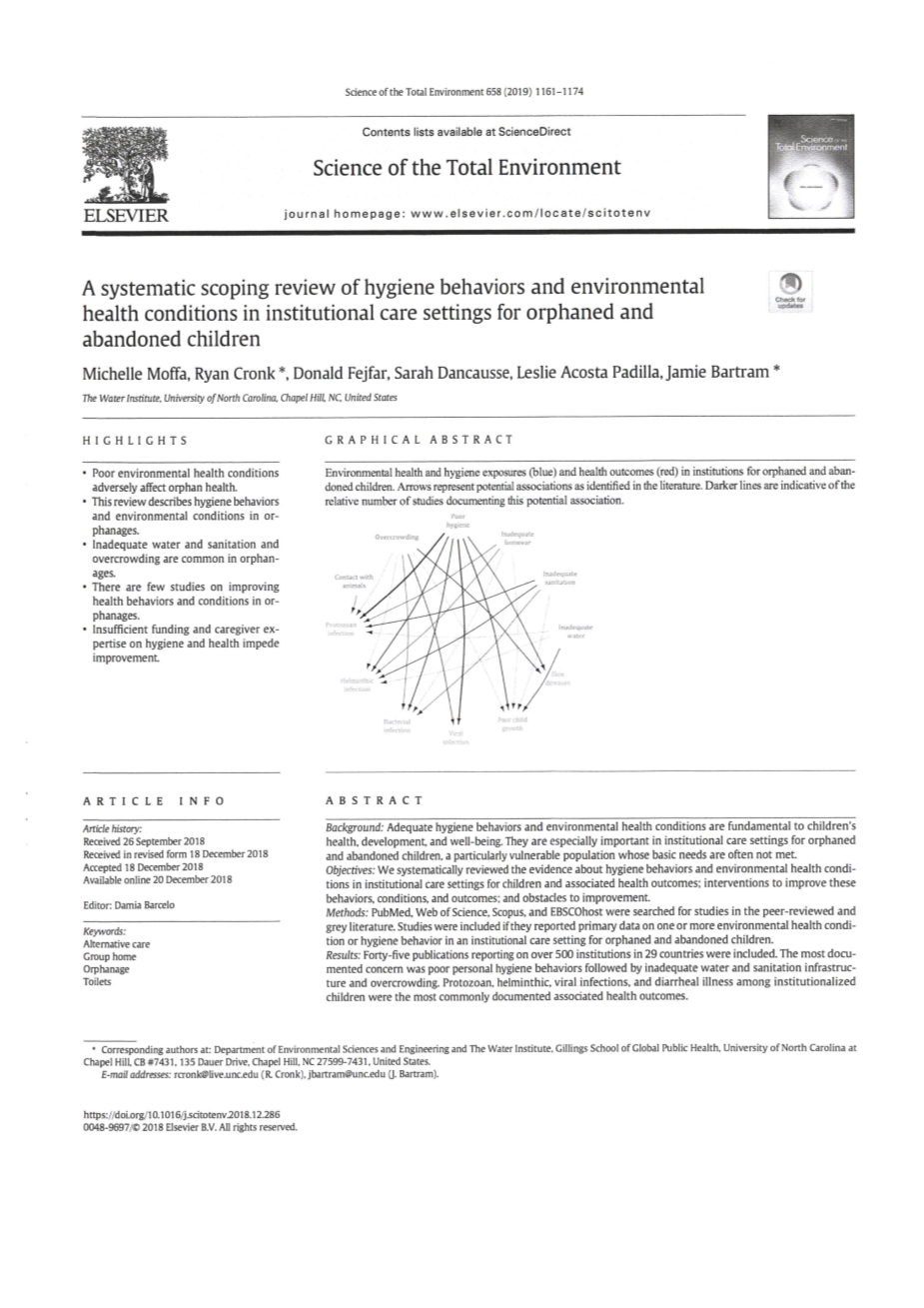

英语原文共 14 页,剩余内容已隐藏,支付完成后下载完整资料
目录
对孤儿和遗弃儿童的机构照料环境中的卫生行为和环境卫生状况进行系统的范围界定审查 12
英文原文(节选)
A systematic scoping review of hygiene behaviors and environmental Check for health conditions in institutional care settings for orphaned and updates abandoned children
A B S T R A C T
Background: Adequate hygiene behaviors and environmental health conditions are fundamental to childrens health, development, and well-being. They are especially important in institutional care settings for orphaned and abandoned children, a particularly vulnerable population whose basic needs are often not met.
Objectives: We systematically reviewed the evidence about hygiene behaviors and environmental health conditions in institutional care settings for children and associated health outcomes; interventions to improve these behaviors, conditions, and outcomes; and obstacles to improvement.
Methods: PubMed, Web of Science, Scopus, and EBSCOhost were searched for studies in the peer-reviewed and grey literature. Studies were included if they reported primary data on one or more environmental health condition or hygiene behavior in an institutional care setting for orphaned and abandoned children.
Results: Forty-five publications reporting on over 500 institutions in 29 countries were included. The most documented concern was poor personal hygiene behaviors followed by inadequate water and sanitation infrastructure and overcrowding. Protozoan, helminthic, viral infections, and diarrheal illness among institutionalized children were the most commonly documented associated health outcomes.
Vulnerable children Discussion: More studies documented the status of hygiene and environmental health in childrens institutions Water quality than interventions to improve behaviors and conditions. Insufficient finances and expertise or involvement of caregivers are reported barriers to implementing improvements in childrens institutions. The development of guidelines for essential environmental health standards in orphanages, monitoring of facility conditions, accountability for facility deficiencies, and implementation research to identify improvement opportunities would contribute to and promote the health and development of orphaned and abandoned children worldwide. 0 2018 Elsevier B.V. All rights reserved.
1. Introduction
Safe environmental health conditions in housing-including water and sanitation infrastructure, ventilation and air quality, and waste and vector management-are fundamental to upholding the rights of children to health, water and sanitation and an adequate standard of living (UN Committee on Economic Social and Cultural Rights, 2003, 1991 ; UN Committee on the Rights of the Child, 2013). Knowledge and use of proper hygiene behaviors and the implementation of infection control measures are also critical in protecting the health of children. These conditions and behaviors are especially important in institutional care settings for orphaned and abandoned children (OAC) where many children live in close proximity.
The United Nations Childrens Fund (UNICEF) defines an orphan as a child (age zero to 17) who has lost one or both parents. There are an estimated 140 million orphans worldwide (UNICEF, 2016). There are numerous children who have one or more living parent, but are abandoned due to a physical or mental disability, poverty, abuse or neglect (Berens and Nelson, 2015). While many OAC live with family or community members, enter the foster care system, or are adopted, an estimated two to eight million children live in institutional care settings (Dunn et al., 2007; Petrowski et al., 2017). Because some of these institutions lack formal management or registration, the number of children housed in institutional care settings is uncertain and likely underestimated (Berens and Nelson, 2015).
Institutional care settings for OAC exist in all world regions and range from orphanages housing hundreds of children to small group homes housing few children. Large institutional care settings were common in the former Soviet states following World War Il (Berens and Nelson, 2015; Petrowski et al., 2017). In sub-Saharan Africa, OAC are traditionally cared for by extended families and communities, but the rise in orphaned children due to human immunodeficiency virus and acquired immune deficiency syndrome (HIV/AIDS) led to increased institutional care (Berens and Nelson, 2015; Bicego et al., 2003). Similarly, the Chinese government began building more institutions for children orphaned by HIV/AIDS in the early 2000s (Berens and Nelson, 2015).
The effects of institutionalization on children vary depending on
剩余内容已隐藏,支付完成后下载完整资料
资料编号:[254705],资料为PDF文档或Word文档,PDF文档可免费转换为Word


